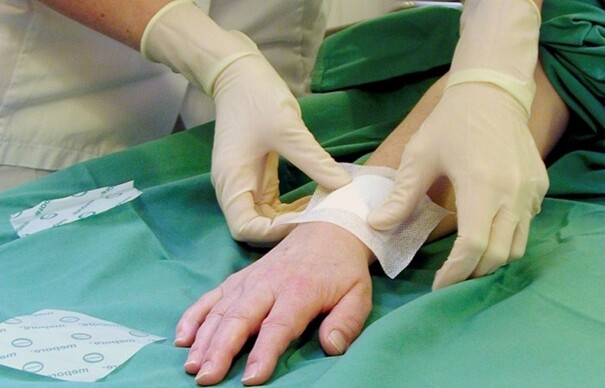How to treat a wound
Today we have treated your wound in the casualty ward. This booklet tells you how to behave and what to be aware of after the treatment.
|
-
Today we have treated your wound in the casualty ward. This booklet tells you how to behave and what to be aware of after the treatment.

-
The nurse or the doctor in the casualty ward has told you how to behave with regard to the wound when you have returned home. The instructions will depend on the treatment of the wound. In general, you should keep the wound clean and dry.
If we have applied an adhesive plaster to the wound, you must keep it on for 1-2 days. You should put on another plaster if it gets wet or damp. When you take a shower you may remove the plaster and let water pass over the wound. After 1-2 days you can remove the plaster, clean the wound carefully, and give it some fresh air.
If we have applied steristrips to the wound, they should not be removed until five days later. You have to be very careful that they do not get wet and fall off.
If we have sewn the wound, you must keep it clean and dry. Contact your general practitioner to have the sutures removed.
-
A wound can hurt. You can ease the pain by holding the wounded part of your body high and keeping it still. You can also take painkillers, such as Paracetamol or Kodimagnyl. You must, however, be aware that Kodimagnyl may cause stomachache.
Take 1-2 tablets at a time 3-4 times a day at the most. For children you must use children’s dose.
Even though the wound has been thouroughly rinsed, inflammation can occur occasionally. The signs of inflammation are:
- warmth, reddening and swelling around the wound
- pain (throbbing) around the wound after more than 24 hours
- fever and malaise
- bad smell from the wound
- thick yellow fluid
- red stripes related to the wound.
If you notice signs of inflammation or if you experience problems of any kind, you should contact your general practitioner, doctor on call, or the casualty ward.
Emergency Department, Aalborg
Tel. 97 66 43 50


